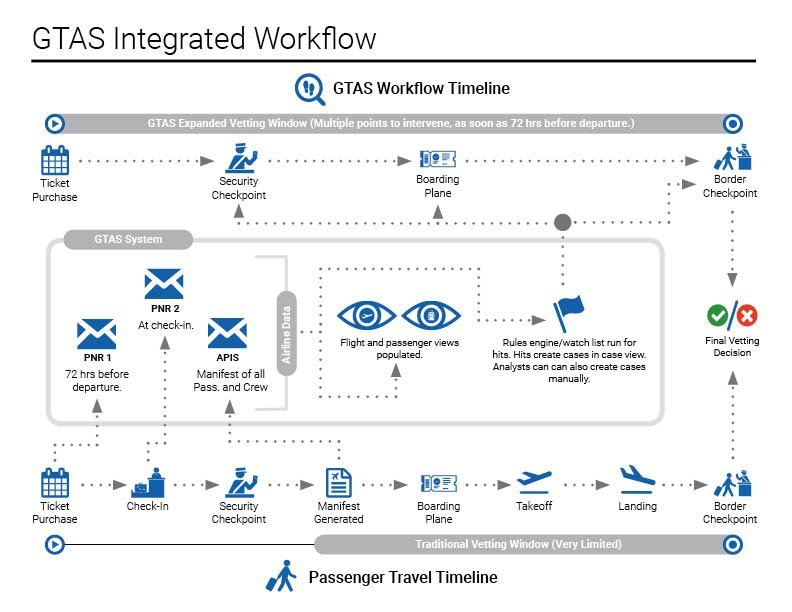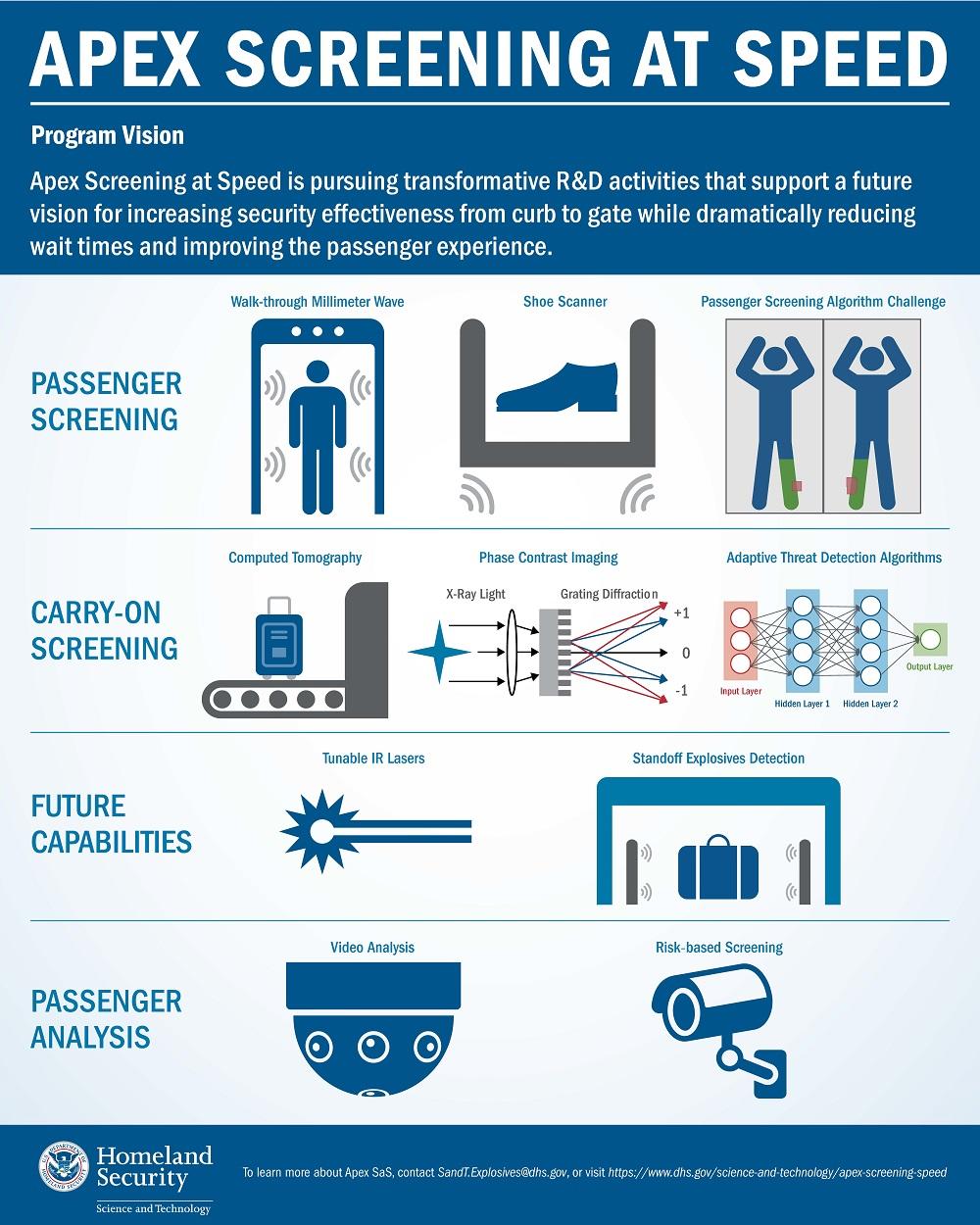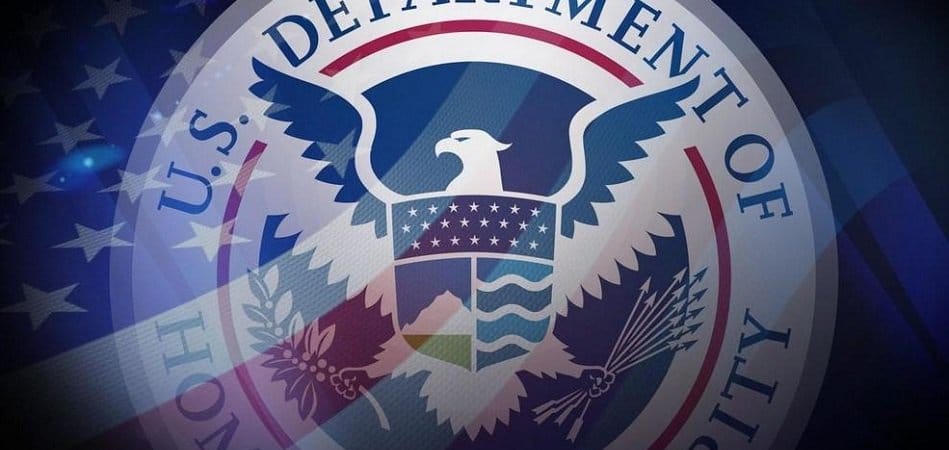The Department of Homeland Security (DHS) routinely handles large amounts of data. Its mandate is to “keep America safe,” and that encompasses many fronts. This includes anything to do with potential threats to the nation, ranging from border security to cybersecurity, so “big data” would be an understatement. Using machine learning and artificial intelligence technology for Homeland Security was inevitable.
Dr. Patrick Carrick, former Chief Scientist of the Department of Homeland Security Science and Technology Directorate (S&T), described it thus: “Eventually data becomes so large, no person can understand it or use it effectively. It takes automated techniques to do that.”
Douglas Maughan described the role of AI in his testimony during an oversight hearing while he was Cybersecurity Division Director of Homeland Security Advanced Research Project Agency. He stated:
AI technology is increasingly providing us with new knowledge and informing our actions. Fueled by sensors, data digitization, and ever-increasing connectedness, AI filters, associates, prioritizes, classifies, measures, and predicts outcomes, allowing the Federal government to make more informed, data-driven decisions.
However, AI for Homeland Security also has its drawbacks. Widespread use of AI has two major public concerns: data privacy and the susceptibility of malicious manipulation and hacks. Some people fear that in the rush to implement AI and ML solutions for urgent problems and fierce competition for government funding, the accuracy and security of these systems might not be as high as it should. This could cause serious problems given that Homeland Security has access to sensitive personal information about the American public.
Nevertheless, Homeland Security has taken steps to integrate AI into its various operations, initiated and overseen primarily by the S&T. Some of the technologies described below participated successfully in the Silicon Valley Innovations Program (SVIP), the idea of which is to find individuals, organizations, and companies that could help bring the Department of Homeland Security and its various wings up to speed with cutting-edge technology.
Among the concerns under Homeland Security slated to receive significant improvements in its operations using AI and ML technology include:
- Border Security
- Emergency Response
- Prevention of Domestic Terrorism
We begin our analysis of AI at the Department of Homeland Security with AI for border security and the Customs and Border Protection Agency (CBP):
Border Security
The DHS carries out border security under the CBP, the largest law enforcement body in the US. According to its website, the CBO “is charged with keeping terrorists and their weapons out of the U.S. while facilitating lawful international travel and trade…takes a comprehensive approach to border management and control, combining customs, immigration, border security, and agricultural protection into one coordinated and supportive activity.”
The border security mission of the CBP is “[p]rotecting our borders from the illegal movement of weapons, drugs, contraband, and people, while promoting lawful trade and travel, is essential to homeland security, economic prosperity, and national sovereignty.”
In other words, the CBP has to monitor everything that happens along the country’s borders on land, air, and sea. It is looking for suspicious individuals and activities while at the same time letting “trusted travelers” through expeditiously. With 328 ports of entry into the US and almost a million people going through them each day, this is a big job.
To manage this workload, the CBP tasked the S&T to find companies with the technology to increase the efficiency of border security. They found three through SVIP so far that managed to get through to Phase 2 (Demo Pilot-ready Prototype), Phase 3 (Pilot-test Prototype in Operation), and Phase 4 (Test in Various Operational Scenarios).
One of these is radar tech company Echodyne, which first caught the attention of the S&T in 2016 with its Metamaterial Electronically Scanning Array (MESA) radar. This compact and lightweight radar system uses a significantly lower amount of power, making it a portable way to scan large areas. Using the capabilities of MESA radar to detect and cue objects of interest together with AI-enabled software, it may greatly improve the CBP’s situational awareness along US borders.
Below is a 3:18-minute video showing how the MESA radar attached to a drone works:
Currently, the CBP is testing the effectiveness of MESA radar by using them as the main component for cueing and detecting in autonomous surveillance towers in the San Diego sectors.
However, Tamr was actually the first company under the SVIP to have a project ready to go into operation. According to a case study, its mandate was to “enhance the entity identification and matching algorithms for GTAS” or the Global Travel Assessment System. This is a free-to-use, open source, web-based application housed in GitHub designed to screen travelers efficiently using standard Advance Passenger Information (API) and Passenger Name Record (PNR)
Below is an illustration of how the GTAS process works:

Tamr provided the CBP with machine learning-enhanced software to analyze the API/PNR data available in the GTAS to resolve entity identification and matching at security and border checkpoints. The idea is to increase the speed at which the GTAS can confirm the identity of a “trusted traveler” or get a “hit” on a person of interest.
The GTAS will use specific data provided routinely by travelers at various points in the process. These include:
- Biographic data, including name, gender, date of birth, citizenship, country of residence, document expiration, and booking date
- Travel data, such as number of passengers, frequent flyer or loyalty program information, seat selection, baggage details, and embarkation/debarkation information
- Flight information, include carriers, routes, and travel dates
In our interview with Tamr communications consultant David Templeton, he explained, “The system generates match probabilities from 0 to 1 that can be used by human managers to make informed decisions.” He also claims the software helps the GTAS make a match in less than five seconds. Currently, the software has full integration into the GTAS application ready for any nation-state to use.
Another possible contributor to the GTAS application is AI company DataRobot with its automated machine learning (AML). The software may improve the speed at which GTAS users can generate predictive models of risk for incoming travelers.
SVIP Technical Director Anil John stated in an interview with NextGov.com that AML could speed up the process and make it easier for non-data scientists to develop and compare models of risk to find out which ones generate the most accurate predictions.
The CBP is currently testing the effectiveness of the prototype in facilitating safe travel and trade prior to integrating it into the GTAS. In the meantime, DataRobot will work on a working model as part of Phase 2 of the SVIP.
Below are two videos explaining how AML works:
On another tack, the Transportation Security Administration (TSA) has been running its own competition to find automated ways to screen passengers for banned items and potential threat objects quickly and accurately. Part of the Apex Screening at Speed (SaS) program, the top prize of $500K went to Jeremy Walthers of DataLab USA. His used a group of deep learning models designed to analyze images from multiple perspectives.
Below is an illustration of where the DHS hopes to bring the SaS program:

The DHS is also looking at vehicle screening at the US/Mexico border using AI-powered facial recognition technology, exciting much criticism from civil liberty and privacy advocates. It planned a pilot program of the Vehicle Face System at the Anzalduas crossing, which captures the faces of drivers crossing the border and checked against a database.
Emergency Response
Working with commercial AI companies seems to work overall for the DHS, and so it has started collaborating with other organizations. The S&T recently formed a partnership and its counterpart in neighboring Canada to address another aspect of Homeland Security: emergency response.
The initiative, called the Next Generation First Responder (NGFR) Apex Program, will specifically look into how to ensure better connectivity, protection, and situational awareness of first responders to emergencies and crises in both countries. First Responders and Detection Acting Director John Merrill claimed the US and Canada has similar requirements, pointing out that:
By jointly determining research and development priorities between the two countries, we can reach our goal faster and more efficiently, eliminating duplication of effort and optimizing funding.
Aside from holding workshops and sharing best practices in emergency response, the NGFR will conduct field experiments using cutting edge, AI-based Assistant for Understanding Data through Reasoning, Extraction and Synthesis (AUDREY) system. Developed by NASA’s Jet Propulsion Laboratory, the acronym is a bit of a stretch, but AUDREY could help first responders to wade through the data to improve situational awareness. This will enable them to communicate better and make faster and better decisions in emergencies. Participants are set to conduct the experiment in Hastings County, Ontario over a two-year period.
Below is a 5-minute video demonstrating the capabilities of AUDREY:
Prevention of Domestic Terrorism
The threat from without is nothing compared to the threat from within. Homeland Security has the unenviable and often controversial task of ensuring the safety and security of people and infrastructures within the borders of the US.
The September 11, 2001 attacks into the very heart of the US have spurred aggressive changes in the policies and practices of the nation to protect itself from terrorist attacks. It resulted in the formation of the DHS and expansion of powers of other federal agencies in efforts to prevent a repeat performance. The public was initially supportive of these reforms, although the effects of such stringent measures have already begun to impinge on its citizens.
Despite the changes, there have been at least six attacks by suspected or confirmed terrorists up to as recently as 2017. Homeland Security policy analyst David Inserra stated: “Yet, as we moved to increase our security, terrorists were thinking up new ways to attack our way of life.”
The DHS is making every effort to do so. It has recently approved the purchase and use of the Cognito platform developed by AI company Vectra, which specializes in mitigating cyber attacks, under its Continuous Diagnostics and Mitigation (CDM) Program. This will allow state and local government bodies as well as 66 federal agencies to monitor for cybersecurity risks to its networks and IT systems continuously.
Vectra uses AI in its Cognito platform to recognize suspicious patterns of behavior as it happens, enabling it to alert human operators to take immediate and necessary action. Below is a 2-minute video about the capabilities of the Cognito platform in cybersecurity:
Ensuring the security of IT and network systems are obviously important, but often the threat is much more physical. This is where the DHS comes under fire from the public.
The pilot testing of facial recognition software in the White House has already sparked some debate. However, a more controversial move by Homeland Security is to provide immigration and Customs Enforcement (ICE) with access to license plate records from the database of Vigilant Solutions. This could enable ICE to track vehicles in real time, raising the fear of a rash of deportations of individuals for political reasons.
While large AI companies are ready to provide the technology to “read” license plates, it is uncertain what the agency is using. Vigilant does have License Plate Recognition software, and the company explains how it works with this 3-minute video:
The DHS has its hands full. It has to to keep up with the ever-evolving demands of keeping the US borders secure and American citizens safe while maintaining a delicate balance between security and civil liberties. Advanced AI technology could be valuable for homeland security, but also inspire fear and doubt among American civilians.
There is no denying that AI for Homeland Security is already happening, and making great inroads into making the US ready for most threats to its land and people. The trick is to discover the extent to which the DHS should take AI and other advanced technology that might encroach civil liberties in the name of public safety.
Header Image Credit: news3lv.com


















